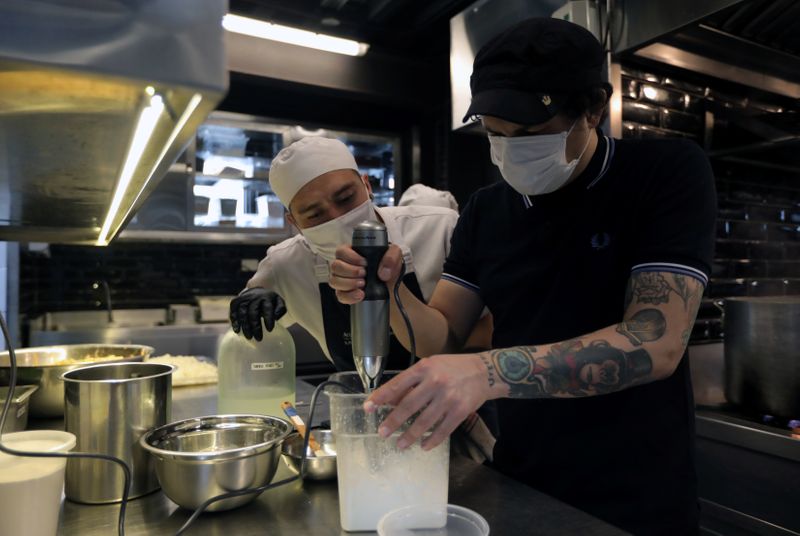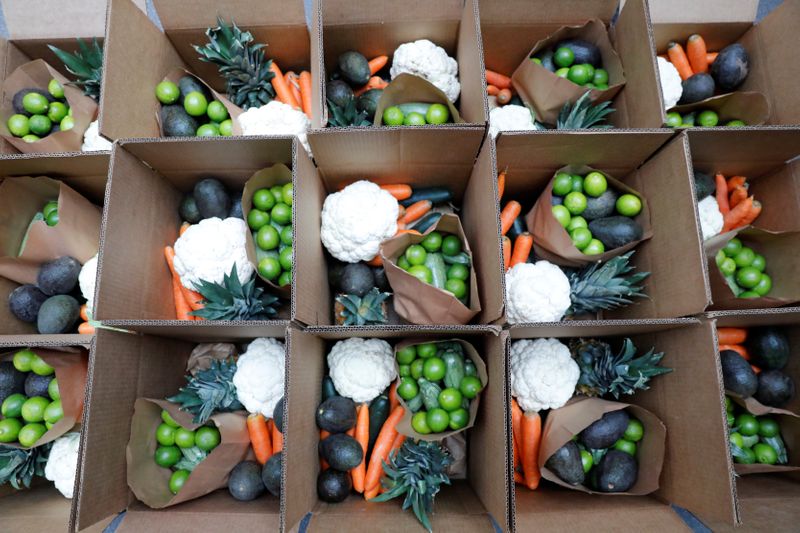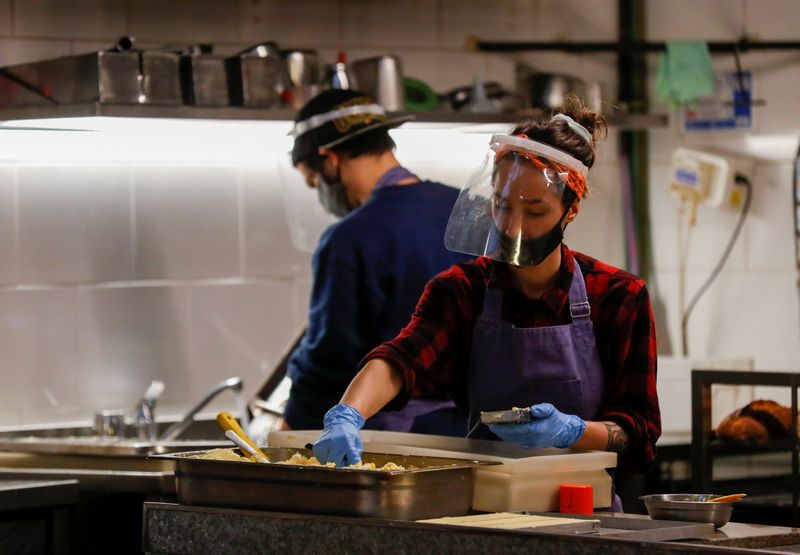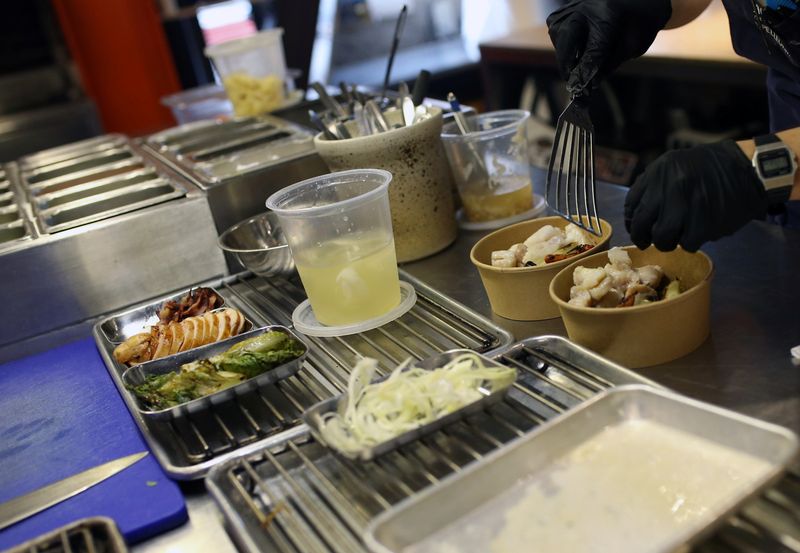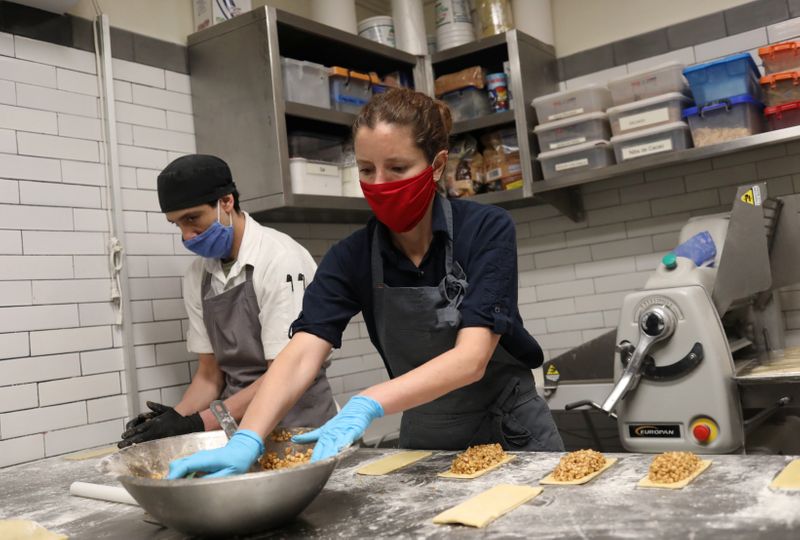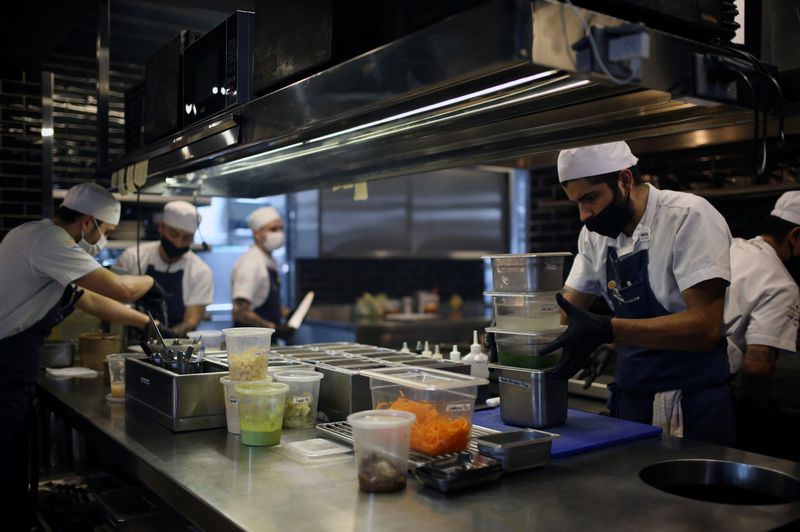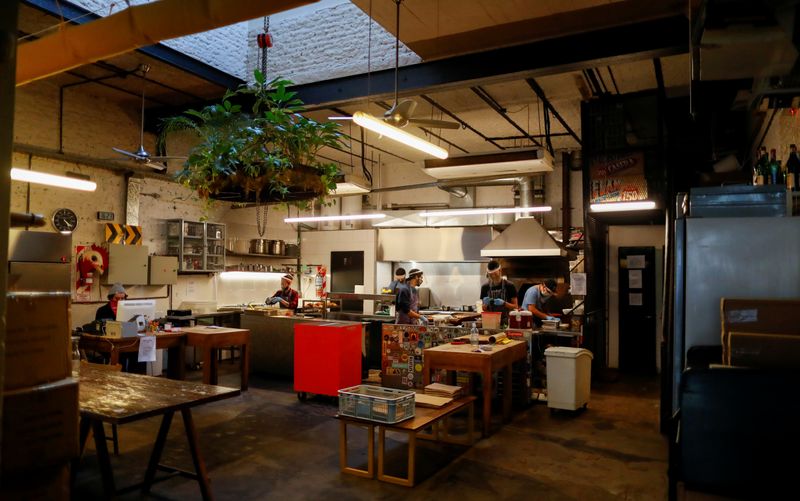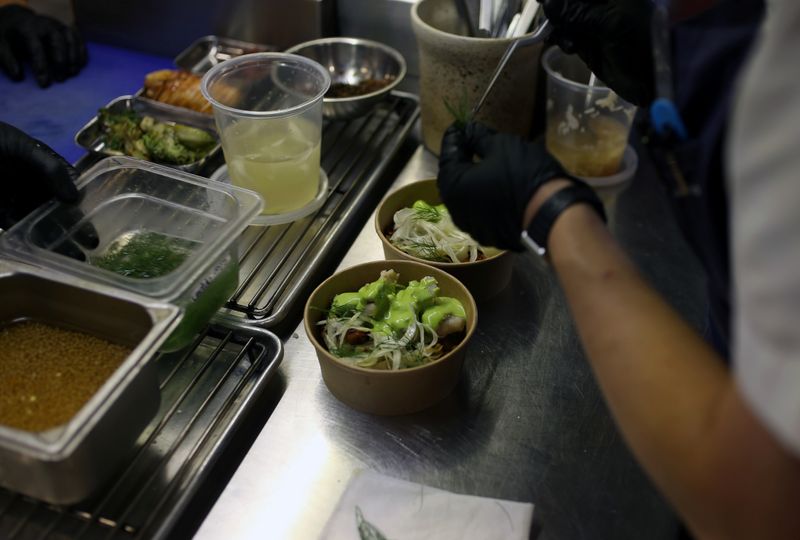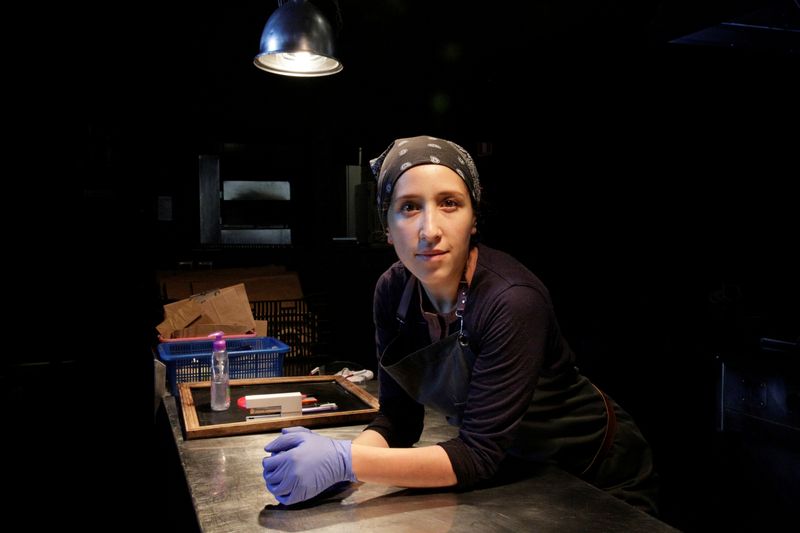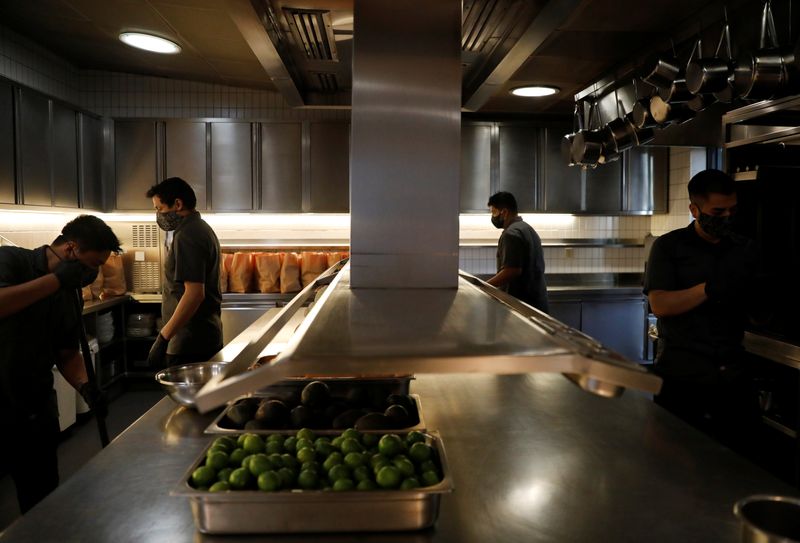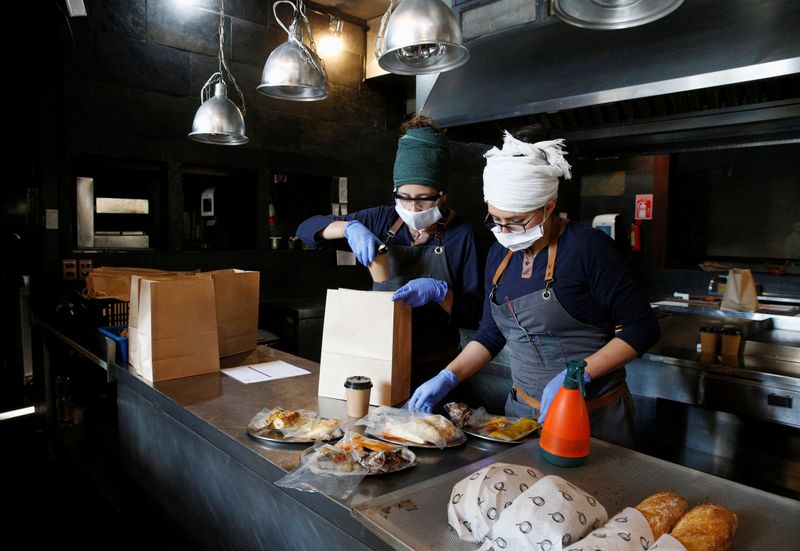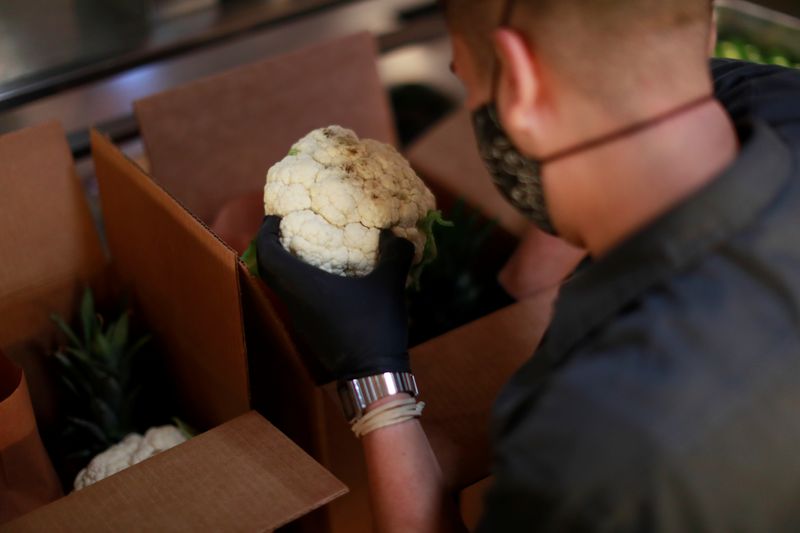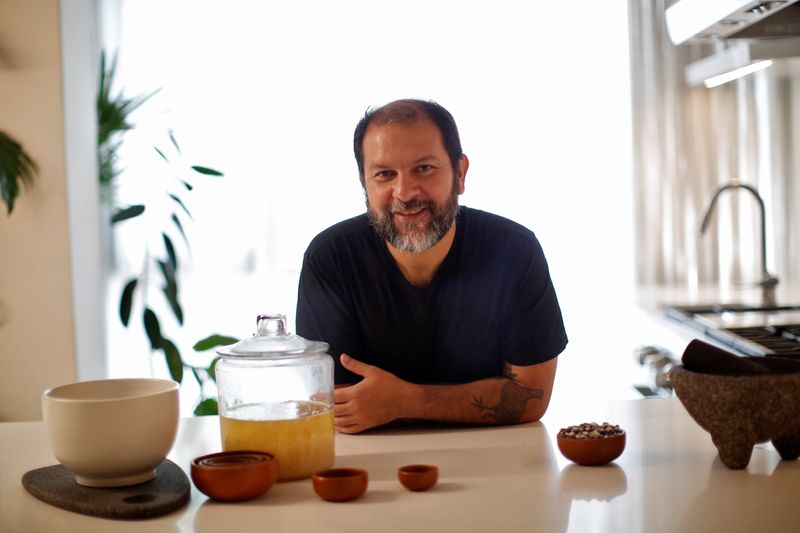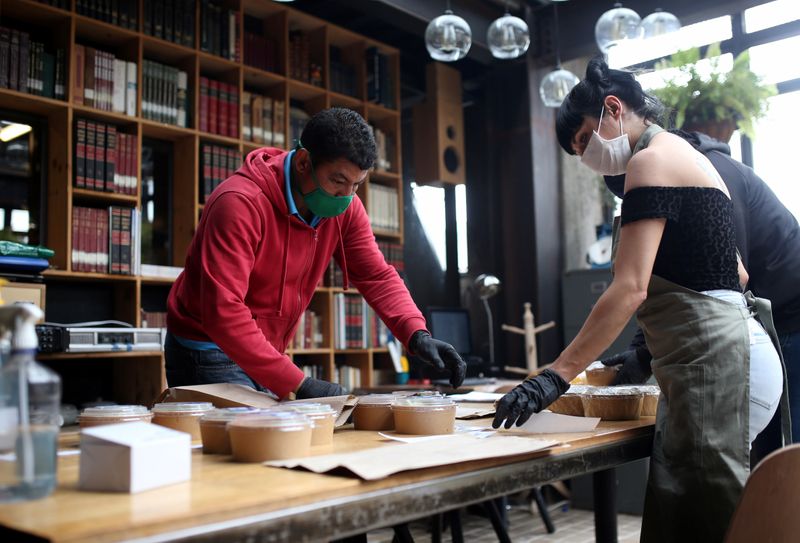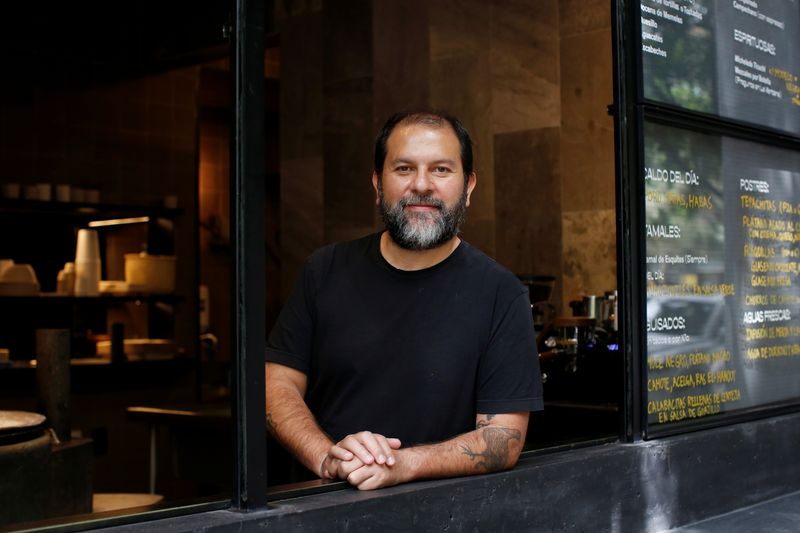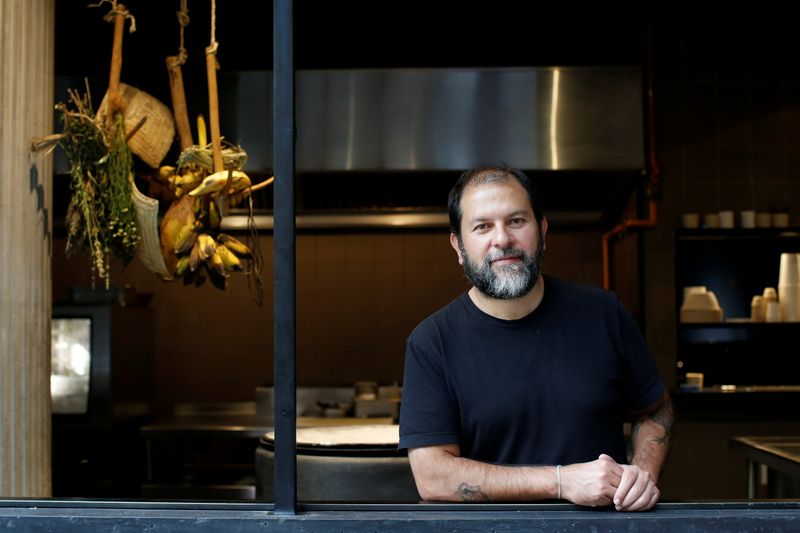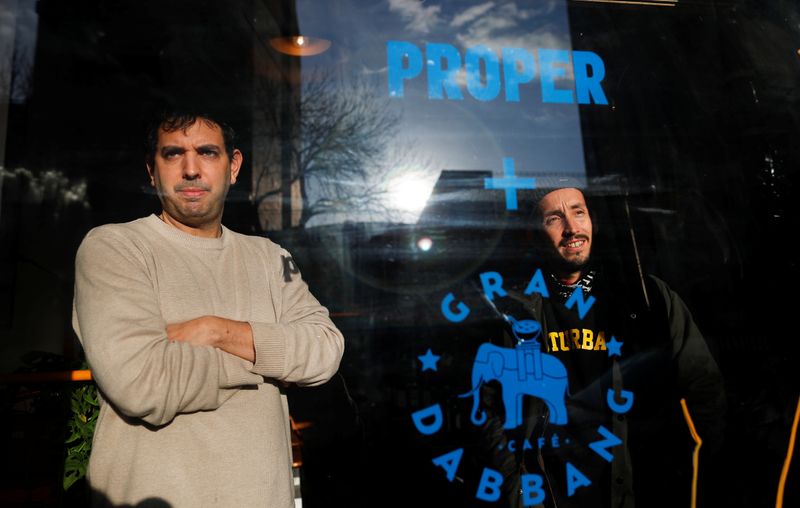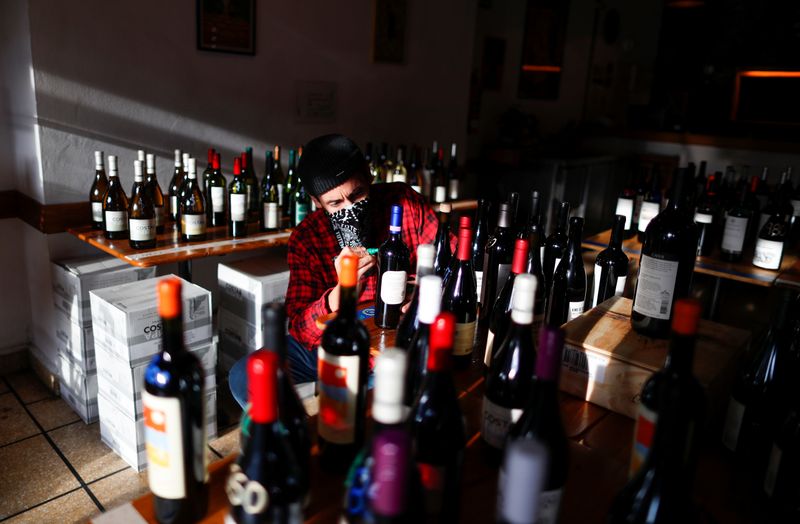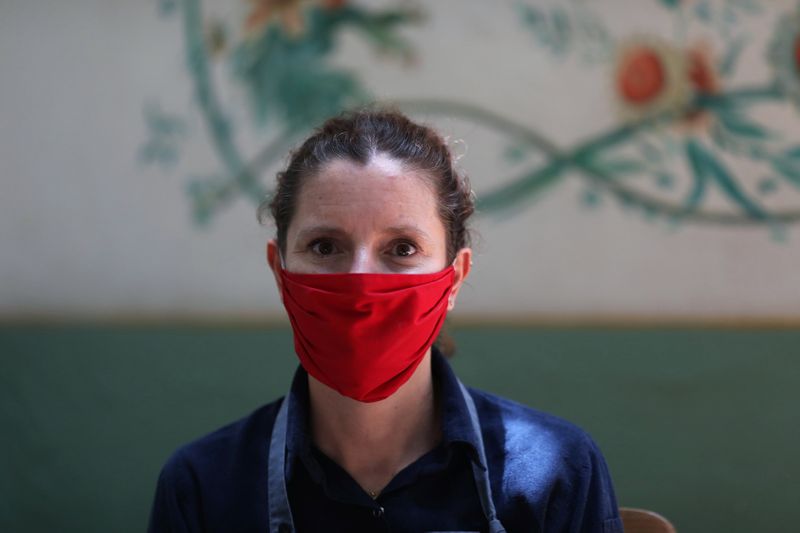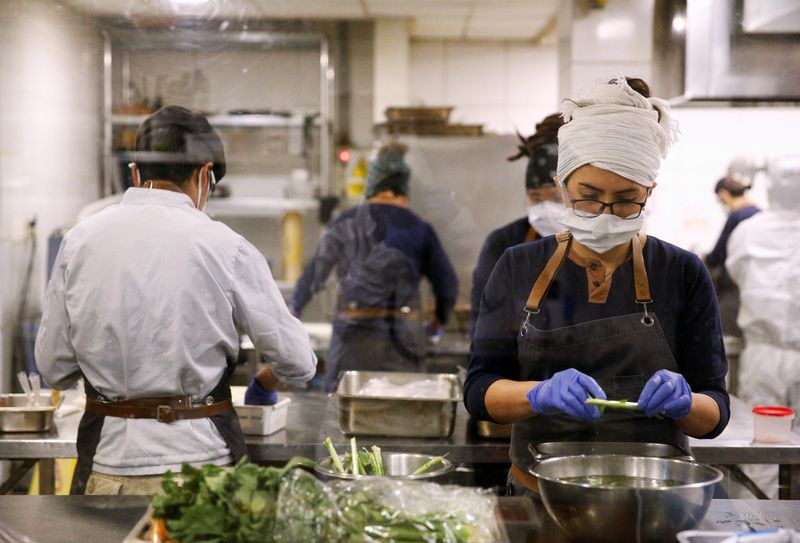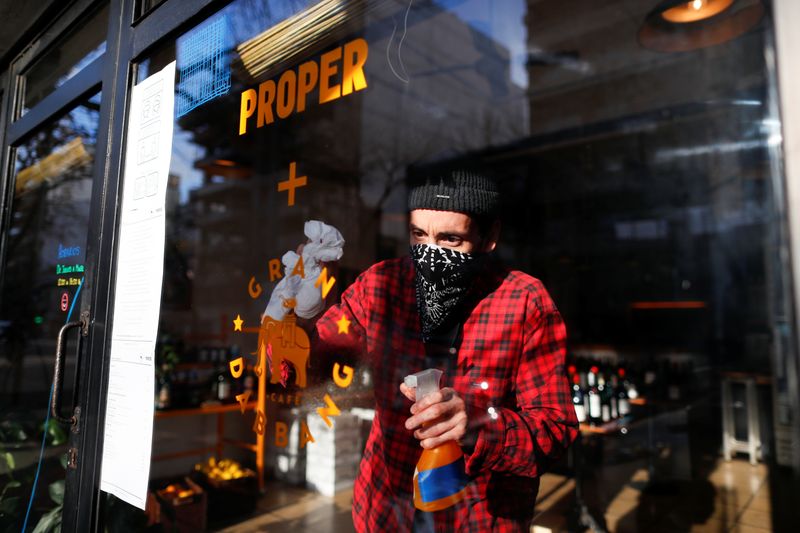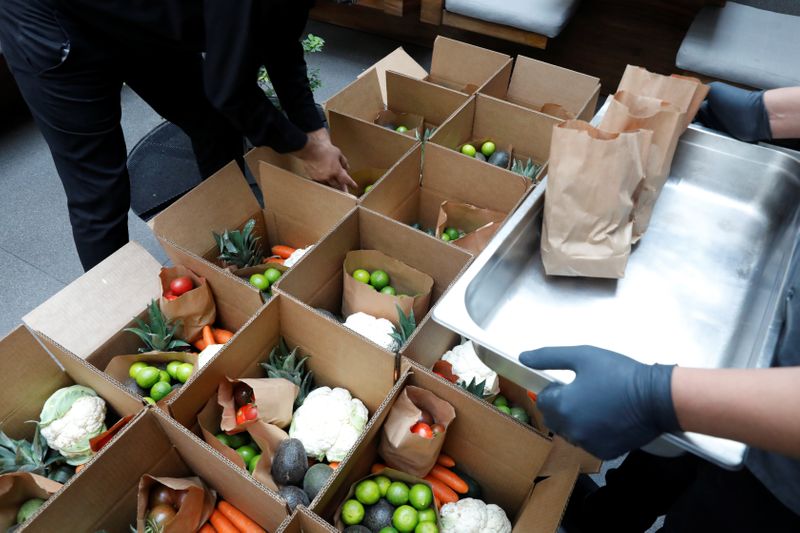MEXICO CITY/BUENOS AIRES (Reuters) – Fans of his uniquely Mexican take on high-end dining once packed a months-long wait list for Enrique Olvera’s Pujol but the restaurant is grappling with a tough new reality as the novel coronavirus haunts Latin America’s culinary upstarts.
For now that reality means giving up on his tasting menu of intricate dishes priced at $95 in favor of selling “baskets” with produce and ingredients like eggs, cheese and honey from his suppliers, whose protection in tough financial times has become a priority.
“We don’t have the size or the means to save the country. Or even the neighborhood,” Olvera said. “But we can take care of everybody who works with us, with our farmers and our employees. If everybody who can do that commits to doing that, then we have a better chance of not collapsing as a society.”
Latin America’s top restaurants are finding creative ways to keep the region’s vibrant gastronomy culture alive.
From combining kitchens to converting sleek haute cuisine temples into produce delivery operations, several are striving to pivot their reliance on foreign tourism and shifting to local comfort foods from gourmet meals to survive the coronavirus crisis.
But it has not been easy, especially since much of the region is still wrestling with surging cases that make full re-opening of dining rooms a distant dream. And it has seemed like a particularly cruel blow given that the region’s high-end dining scene was just coming of age.
In 2010 just two restaurants from Latin America made The World’s 50 Best Restaurants list. By 2019 eight had made the cut, with two in the top 10, as eateries started forging their own paths and takes on cuisine, said William Drew, director of content for the closely watched list.
“There is a whole number of restaurants that are exploring their own indigenous produce and the traditional dishes of indigenous people,” Drew said.
Now many are struggling just to stay alive.
DISTANCING PROTOCOL
When Pujol does open in a couple more months, Olvera expects it to offer just a third of its tables.
In economic crisis-stricken Argentina, Mariano Ramon, who helms Buenos Aires fusion hot spot Gran Dabbang, partnered with fellow chef Leo Lanussol of neighborhood favorite Proper to offer a combined delivery menu.
By putting both staffs to work in single kitchen in shifts to ensure distancing protocol, the chefs – also longtime friends – were able to cut costs and stay afloat. Orders are prepared at Proper while Gran Dabbang, ranked as a top 50 restaurant in Latin America, sells wine and products from local vendors.
Flexibility, Ramon said, is the key to surviving in Argentina, which recently marked its ninth sovereign default.
“I think that in Argentina we have an advantage, which is that we have little memory and we are very used to crises,” Ramon said.
Chef Marsia Taha of Gustu in La Paz, co-founded by Danish celebrity chef Claus Meyer, quickly revamped her multicourse dining experience.
“We are turning more towards a friendly offer for the local public, developing dishes that perhaps we did not make before, healthy, abundant, balanced and affordable food, which is what people from La Paz need right now,” Taha said, adding that the restaurant posts tutorials on social media so clients can learn how to prepare their meals.
“The entire operating system has changed 100%,” Taha said.
SURVIVAL EFFORTS
Technology is also playing a role at Mexico City’s Rosetta, whose chef Elena Reygadas said her dining room is now full of staffers on laptops coordinating orders and deliveries.
When Reygadas finally reopens Rosetta, whose tall walls inside an early 20th century mansion are adorned with leafy vines, she plans to use tall palms to create more distance between tables.
But she worries that foreigners, who comprised 60% to 70% of her clientele, will be slow to return.
“We were full of people trying to understand what Mexican food was,” said Reygadas. “Young people started coming to the city just to spend a few days going from one restaurant to the other.”
As Bogota’s El Chato’s dining room remains shuttered, its chef owner Alvaro Clavijo is putting on virtual cookery classes via Zoom to accompany ingredients ordered from the restaurant by diners who are keen to cook complex dishes.
As for many of his cohorts across the region, a key goal is protecting his suppliers.
“If we reopen and they aren’t around, we aren’t going to survive either,” he said.
(Reporting by Cassandra Garrison in Buenos Aires, Daina Beth Solomon in Mexico City and Oliver Griffin in Bogota; additional reporting by Monica Mochicao in La Paz; Editing by Christian Plumb and Lisa Shumaker)

